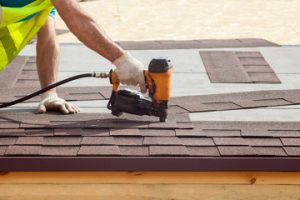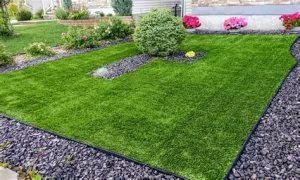Cabinet Refinishing Modesto is a cheaper alternative to refacing or replacement that offers a wide range of design options. It allows you to achieve a clean, modern look or give your kitchen a rustic and traditional feel.

Refinishing is also a less invasive option that reduces your remodeling timeline. This can save you weeks and months of construction time, noise, and dust.
Cabinet refinishing is a great option for homeowners who want to update the look of their kitchen without the cost and inconvenience of an extensive remodeling project. The process involves cleaning the cabinets and removing the hardware, then applying a new finish to achieve your desired aesthetic. Cabinet refinishing can be done on most types of wood, including oak, cherry, maple, and walnut. The key to a successful cabinet refinish is proper preparation, which includes cleaning the cabinets and sanding the surfaces to ensure that the new finish adheres properly.
To start, remove all of the decorative hardware from the cabinets and place it in a safe location to prevent it from getting lost or damaged during the process. Next, carefully take off the cabinet doors so that you have access to the frames and any areas that need to be painted. Then, using a degreaser and kitchen grime remover, clean the cabinet surfaces to eliminate grease buildup and create a clean canvas for painting.
The next step is to lightly sand the cabinet surfaces, which will help to create a smooth surface that will allow the paint or stain to adhere evenly. After sanding, the cabinets should be completely cleaned and wiped down with a damp cloth to remove any residue left over from the sanding process. It is important to use a high-quality primer that will protect the cabinets from moisture and mildew and help them to resist chipping and peeling. Finally, after the primer has dried, you can begin the painting process.
When it comes to choosing a color or design for your cabinets, the options are nearly endless. From a sleek, modern appearance to a rustic, traditional feel that replicates a wooden appearance, there is a style that will work for any home. If you are having trouble deciding, the professionals at N-Hance can assist you with achieving a beautiful, custom look.
There are many benefits to choosing cabinet refinishing over other remodeling methods, such as refacing or replacement. Refinishing is more affordable, quicker, and environmentally friendly, as it reduces waste and avoids adding materials to landfills. However, it is important to choose a trusted professional for your refinishing project to ensure that the job is completed correctly and lasts for years to come.
Cleaning
Cabinet refinishing is a cost-effective alternative to replacing your cabinets and offers the same beautiful results with less disruption. Unlike complete replacement, this process does not require any demolition and can take place within your home. Surfaces like countertops and floors are protected to minimize mess and your appliances and cabinets are fully functional throughout the process.
We begin by thoroughly cleaning the cabinet and drawer surfaces, removing dirt, grime and any previous finish that may have worn away over time. Surfaces are then lightly sanded with medium-grit sandpaper to remove rough spots, minor wood defects and prepare them for new finishes. Once the cabinet surfaces are cleaned and sanded, they are prepared for painting or staining. We also update the cabinet hardware, including knobs, handles and hinges, upon request.
Always use gentle cleaners and avoid harsh chemicals that can strip the finish and cause damage to your cabinets. Vinegar is particularly effective on stubborn stains, but be sure to mix it with water in a spray bottle and use a soft cloth or sponge instead of scouring pads.
Inspection
Cabinet refinishing is a great option for homeowners looking to revitalize their spaces without the expense of a full renovation. This process involves sanding down the existing finish and replacing it with a fresh coat of paint or stain. This can be a time-consuming and difficult project, especially for those who are not experienced with sanding and painting. Getting the job done right requires patience and attention to detail. Those who are unsure of whether or not they can handle the task themselves should seek out the services of a professional.
A cabinet refinishing company will perform a thorough inspection of the existing cabinets before beginning the work. They will ensure that the new coating is adhered to the surface and that it is protected from moisture. They will also inspect the interior components of the cabinets for damage. It is important to note that refinishing may not be a suitable option for all materials used in cabinetry. Laminate and thermofoil are not compatible with refinishing because they cannot be sanded or chemically stripped.
If you are refinishing your cabinets with a color other than their original finish, it is important to test the paint in an inconspicuous area before applying it to the whole cabinet. A quick test will let you know if the new coat of paint is oil-based or water-based (latex). Oil-based paints are not compatible with latex, and vice versa. A quick and easy way to test for the type of finish is to rub a cotton ball or rag with denatured alcohol over the surface. If the old paint removes easily, it is likely oil-based, and if the surface feels soft or sticky to the touch, it is most likely latex.
The final step of the refinishing process is to apply a clear protective coat to the cabinets and to make any minor repairs that are necessary. Then, the doors and drawers can be reinstalled with their hinges and hardware. It is a good idea to label each door and drawer with the cabinet number before removing it so that they can be returned in the correct order.
Maintenance
Cabinet refinishing breathes new life into your existing cabinets, making them look fresh and modern. However, this process requires careful attention to the details to ensure a professional finish that looks beautiful and lasts for years. Professionals prepare the surface of your cabinets by thoroughly cleaning and sanding to create a smooth base for the new stain or paint. They also repair minor scratches and dents to enhance the aesthetics of your kitchen.
Refinishing your cabinets is an eco-friendly option that reduces waste and avoids the need to manufacture new materials. It’s also significantly less expensive than refacing or replacing your cabinets. The timeframe for this project varies, depending on the size of your kitchen and number of cabinets. However, refinishing is typically completed in just a few days to a few weeks. This is a much shorter timeline than a complete replacement, which can take weeks or months and requires your kitchen to be out of commission during the majority of that time.
Aside from the ecological and environmental benefits of cabinet refinishing, it’s a cost-effective way to revamp the aesthetics of your kitchen. It can be used to introduce a bold color or to match current trends without the expense and hassle of an entire kitchen makeover. It’s also a great way to increase the value of your home, as potential buyers often favor modern-looking cabinetry when looking at properties.
During cabinet refinishing, professionals can also add a layer of protective coating to your cabinets to help protect them from damage. This is especially important in areas that receive excessive sunlight. The UV rays from direct sunlight can cause the surface of your cabinets to crack, fade, or discolor over time. However, this layer of protection helps prevent damage and maintains the look and function of your cabinets.
Keep in mind, cabinet refinishing doesn’t allow for significant structural changes to your cabinets, and it won’t fix major damages or defects. If you’re looking to make substantial changes, a full renovation with refacing or replacement is a better option.


